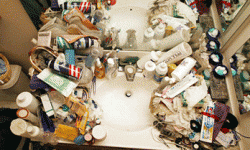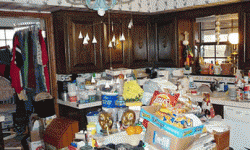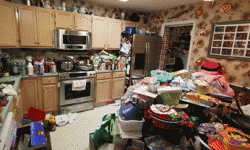The images are startling: Entire rooms filled with trash, newspapers stacked to the ceiling, dozens of animals packed into a single home. Exits blocked, appliances buried, showers filled with mail instead of shampoo. It's enough to make you run the other way -- and many people do. But if it's someone you care about doing the hoarding, you might just want to stick around and help.
This, it turns out, is much easier said than done. It's not a case of simply going in with a box of trash bags. In fact, that might only make the problem worse.
Advertisement
When hoarding first became part of the public consciousness in the '90s, the overriding response was one of disgust. Now, we know it's a mental disorder, and one that can be overcome. But it's not easy, and being part of the solution takes a light, nonjudgmental touch.
This really is the first step for anyone who hopes to help a hoarder get better: Approach the situation without criticism.



